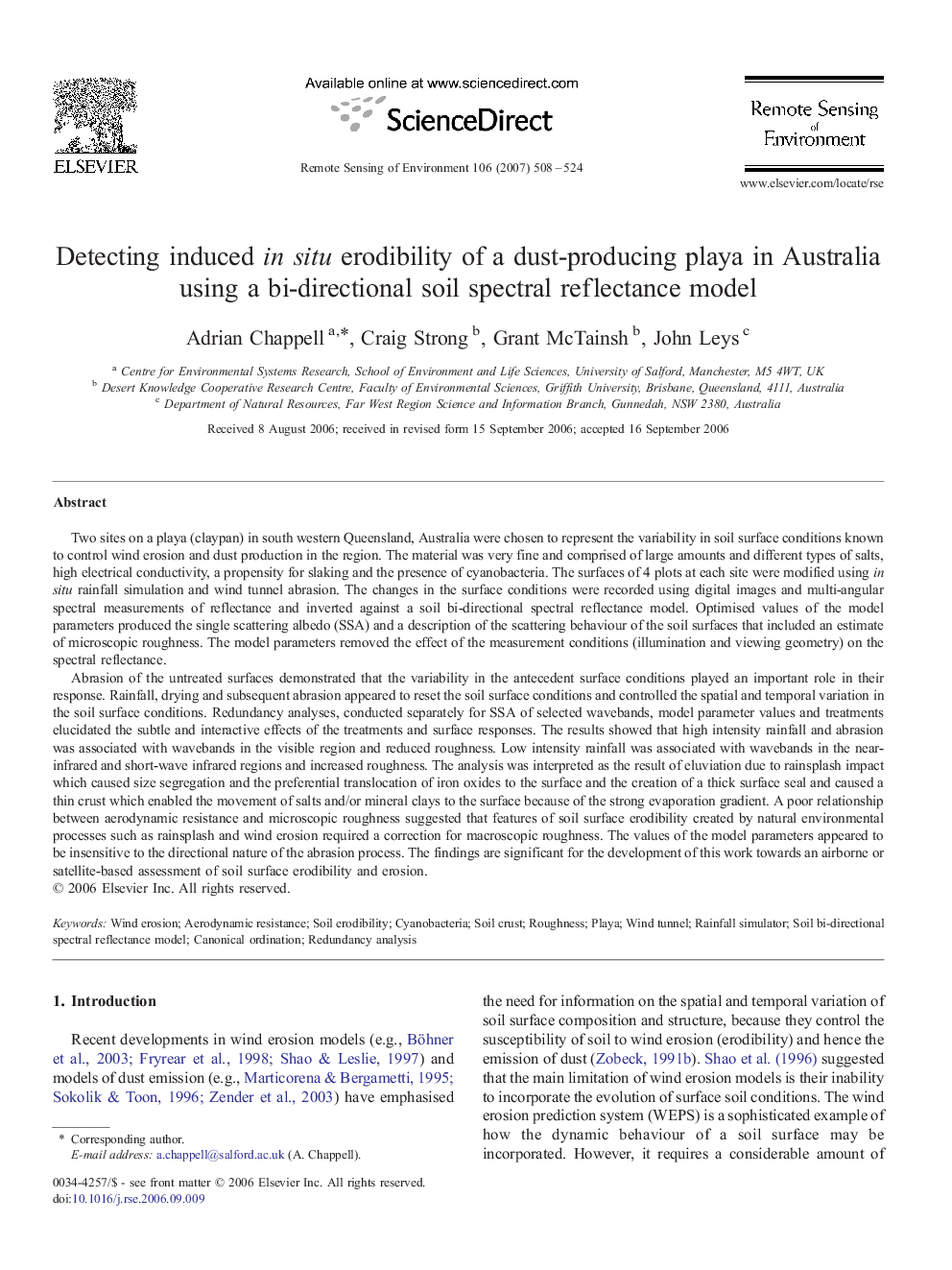| کد مقاله | کد نشریه | سال انتشار | مقاله انگلیسی | نسخه تمام متن |
|---|---|---|---|---|
| 4460857 | 1621352 | 2007 | 17 صفحه PDF | دانلود رایگان |

Two sites on a playa (claypan) in south western Queensland, Australia were chosen to represent the variability in soil surface conditions known to control wind erosion and dust production in the region. The material was very fine and comprised of large amounts and different types of salts, high electrical conductivity, a propensity for slaking and the presence of cyanobacteria. The surfaces of 4 plots at each site were modified using in situ rainfall simulation and wind tunnel abrasion. The changes in the surface conditions were recorded using digital images and multi-angular spectral measurements of reflectance and inverted against a soil bi-directional spectral reflectance model. Optimised values of the model parameters produced the single scattering albedo (SSA) and a description of the scattering behaviour of the soil surfaces that included an estimate of microscopic roughness. The model parameters removed the effect of the measurement conditions (illumination and viewing geometry) on the spectral reflectance.Abrasion of the untreated surfaces demonstrated that the variability in the antecedent surface conditions played an important role in their response. Rainfall, drying and subsequent abrasion appeared to reset the soil surface conditions and controlled the spatial and temporal variation in the soil surface conditions. Redundancy analyses, conducted separately for SSA of selected wavebands, model parameter values and treatments elucidated the subtle and interactive effects of the treatments and surface responses. The results showed that high intensity rainfall and abrasion was associated with wavebands in the visible region and reduced roughness. Low intensity rainfall was associated with wavebands in the near-infrared and short-wave infrared regions and increased roughness. The analysis was interpreted as the result of eluviation due to rainsplash impact which caused size segregation and the preferential translocation of iron oxides to the surface and the creation of a thick surface seal and caused a thin crust which enabled the movement of salts and/or mineral clays to the surface because of the strong evaporation gradient. A poor relationship between aerodynamic resistance and microscopic roughness suggested that features of soil surface erodibility created by natural environmental processes such as rainsplash and wind erosion required a correction for macroscopic roughness. The values of the model parameters appeared to be insensitive to the directional nature of the abrasion process. The findings are significant for the development of this work towards an airborne or satellite-based assessment of soil surface erodibility and erosion.
Journal: Remote Sensing of Environment - Volume 106, Issue 4, 28 February 2007, Pages 508–524